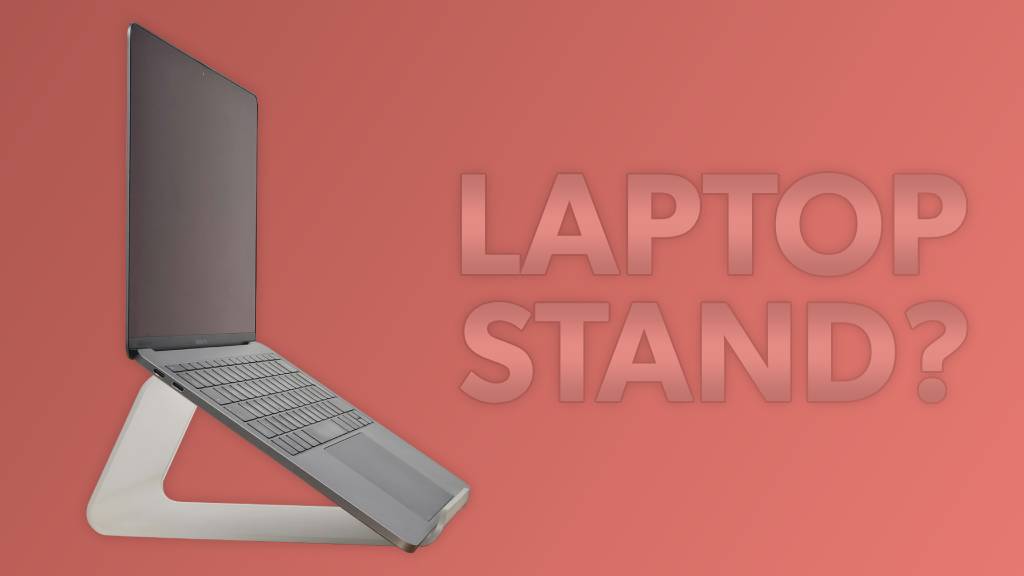Introduction
Laptop stands have become a popular accessory for many laptop users, especially with the rise of remote working. They offer several benefits but also come with some drawbacks. This article explores the pros and cons of using a laptop stand to help you decide if it’s a necessary addition to your workspace.
Key Takeaways
- Ergonomics and Productivity: Laptop stands improve posture and reduce strain, fostering comfort and productivity during long work sessions.
- Cooling and Aesthetics: Elevating laptops enhances airflow for better performance, while also decluttering and beautifying the workspace.
- Considerations Before Buying: Weigh factors like usage frequency, portability, budget, and adjustability to choose a stand that fits your needs.
Pros of Using a Laptop Stand

Improved Ergonomics and Posture
One of the primary benefits of using a laptop stand is the improvement in ergonomics. By raising the laptop screen to eye level, a stand helps reduce neck and back strain, promoting a more natural and upright posture
This ergonomic setup can significantly enhance comfort and reduce the risk of musculoskeletal issues.
Increased Productivity and Focus
A comfortable and ergonomic workspace can lead to increased productivity and focus. When your body is positioned correctly, you can work for longer periods without discomfort, which can enhance your concentration and overall work experience.
Better Cooling and Laptop Performance
Laptop stands can improve airflow around your device, preventing overheating and ensuring better performance. By elevating the laptop, stands help keep the device cool, which can prolong its lifespan and prevent damage.
Enhanced Aesthetic and Organization
Laptop stands can add aesthetic appeal to your setup, making it look more organized and professional. They can also help manage cables and free up desk space, reducing clutter and creating a more efficient workspace.
Portability and Flexibility
Many laptop stands are designed to be lightweight and portable, allowing you to create an ergonomic workspace wherever you go. This flexibility is particularly beneficial for remote workers who need to set up their workspace in different locations.
Cons of Using a Laptop Stand

Cost and Investment
One of the main drawbacks of laptop stands is their cost. While some stands are affordable, others can be quite expensive, which might not be justifiable for all users.
Bulky and Difficult to Transport
Some laptop stands can be bulky and challenging to carry around, which can be inconvenient for users who frequently move between workspaces.
Compatibility and Fit Issues
Finding a laptop stand that fits your specific laptop model can be difficult. Not all stands are compatible with all laptop sizes, which can limit your options.
Stability and Adaptation Concerns
Stability can be a concern with some laptop stands, as they may wobble or not support the laptop securely. Additionally, there might be an adaptation period where users need to get used to the new setup.
Additional Setup Time
Using a laptop stand requires additional setup time, which might be a hassle for some users. This includes adjusting the stand to the right height and angle for optimal comfort
Factors to Consider Before Buying a Laptop Stand

- Usage Frequency: If you spend long hours on your laptop, a stand can be a game-changer. For sporadic use, it may be overkill.
- Work Environment: Consider whether your desk or workspace already supports good ergonomics. If not, a laptop stand can help bridge the gap.
- Portability Needs: For on-the-go workers, lightweight and collapsible stands are more suitable.
- Budget: Determine how much you’re willing to spend. Budget-friendly options often suffice for casual users, while premium stands might be better for professionals.
- Design and Build Quality: Choose a stand that fits your laptop size, is durable, and aligns with your aesthetic preferences.
- Adjustability: Look for stands that allow you to adjust the height and angle for maximum flexibility.
Do You Really Need a Laptop Stand?
The necessity of a laptop stand boils down to your individual needs and habits. If you use your laptop for extended periods and struggle with posture or overheating, a laptop stand is a worthwhile investment.
While it has its drawbacks, its benefits often outweigh the negatives for regular laptop users. Consider your specific needs, budget, and workspace setup to decide whether a laptop stand is the right addition to your arsenal.
Note: Any verdict given by us on any of the companies, or specs of a device is subjective. Our preferences can be different from yours, so be sure to conduct your own research to make a decision that is good for you.
Frequently Asked Questions (FAQs)
Laptops by Phonesaaz is an expansion of Phonesaaz, aiming to guide users toward making informed purchase decisions related to laptops. It covers product comparisons, reviews, and targeted guides to address specific aspects of laptops.

